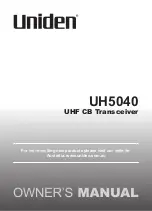
Pre-Installation Requirements
Verify Tx/Rx Path Gain Budgets
OceanTRx
TM
4-500 Installation and Operations Manual
3-23
Example of Dual-System L-Band Rx Levels calculations:
In the example, the calculation of Rx attenuation separated to 2 paths for 2 systems:
On the first path’s system (Yellow marked on the excel), the LMR-600 cable length is
50m, LNB Gain is 63 dB, Rx Ku-Band is 11.2 GHz, CCU "BDMx" attenuation is "0" dB
and the “DSS” attenuation is “-0.2dB” dB, Satellite EIRP is 39 dBW, Transponder
Bandwidth is 36 MHz, and the Used Bandwidth is 1 MHz. As a result of this example,
the LNB Output power is -51.1 dBm and the derived Rx L-Band Level received in the
modem is:
-41.1 dBm
.
LMR Cable loss: 4.8dB
On the second path’s system (Green marked on the excel), the LMR-600 cable length
is 100m, LNB Gain is 63 dB, Rx Ku-Band is 11.2 GHz, CCU "BDMx" attenuation is "0"
dB and the “DSS” attenuation is “-0.2dB” dB, Satellite EIRP is 39 dBW, Transponder
Bandwidth is 36 MHz, and the Used Bandwidth is 1 MHz. As a result of this example,
the LNB Output power is -51.1 dBm and the derived Rx L-Band Level received in the
modem is:
-45.9 dBm
.
LMR Cable loss: 9.6dB
















































